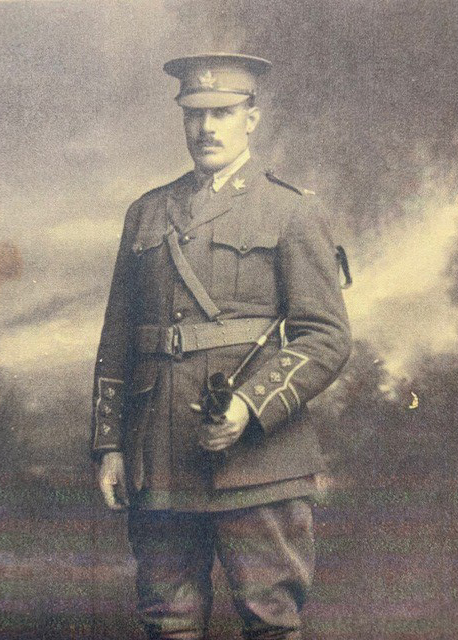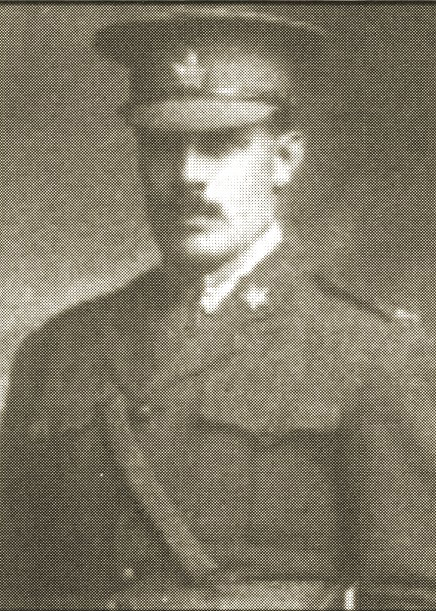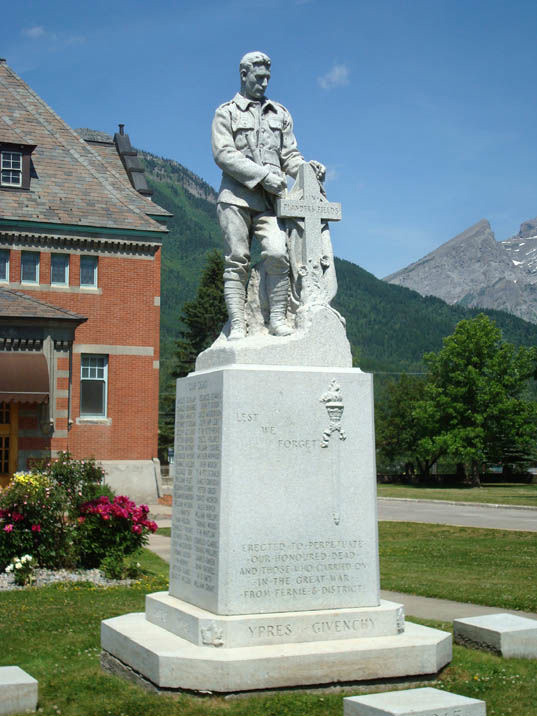Remembering our heroes: Senator Black honours Robert John Black

When the call to serve reached Robert John Black at the onset of the First World War, he didn’t hesitate. Though he was in the midst of establishing the Liberal Party in the Regional District of East Kootenay, B.C., he turned down a political career to fight for “king and country.”
Maj. Black — cousin of Senator Robert Black of Ontario — quickly put his organizing skills to good use, leaving his Fernie, B.C. home to recruit his own regiment. The 103rd battalion became known as “Black’s Timber Wolves.”

Maj. Robert John Black was described as “a brilliant and capable officer” in a newspaper following his death in 1917. Ontario Senator Robert Black of Ontario and his father were named after him. (Photo credit: Family of Senator Robert Black)
Maj. Robert John Black was described as “a brilliant and capable officer” in a newspaper following his death in 1917. Ontario Senator Robert Black of Ontario and his father were named after him. (Photo credit: Family of Senator Robert Black)
Once overseas, Maj. Black was at first responsible for building railway lines due to his experience as superintendent of the Great Northern Railway in Fernie.
The rail lines were crucial in supplying the front lines, but his heart wasn’t in it. He wanted to fight, and so he did.
Within a month, the eager soldier was on the front lines. Soon after, he suffered a leg wound. It was a “blighty” — the kind of not-too-serious injury some soldiers prayed for because it would give them a break from the front lines — and it should have sent him to the comfort of a London hospital.
But on March 1, 1917, Col. Arnold Henry Grant Kemball of the 54th battalion was killed and Maj. Black was chosen to succeed him. He was told that he would lead the 54th battalion into the Battle of Vimy Ridge as a colonel.
With his leg still wounded, he led his troops on horseback. But this made him an easy target and he was shot.
According to his fellow soldiers, he kept fighting anyway.
“Maj. Black fought like a lion,” wrote one of the survivors in records kept by the Black family.
“He seemed to have forgotten everything but to destroy the enemy.”
He lay in the mud for nearly 36 hours before he was found and taken into surgery. He lived for three days under the care of nurses before succumbing to his wounds on April 12, 1917. He was 36.
His brother, David Black, was told the major’s final thoughts were about his children. A newspaper clipping from the Daily Colonist dated April 20, 1917 praised Maj. Black as a “fine specimen of manhood and a brilliant and capable officer.”
He is buried at the Barlin Communal Cemetery in Pas de Calais, France.

Maj. Black survived in the mud for nearly 36 hours after being shot by German soldiers during the Battle of Vimy Ridge in April 1917. (Photo credit: Veterans Affairs Canada)

A war memorial in downtown Fernie, B.C. bears the names of Canadians from the region who never returned home. (Photo credit: Veterans Affairs Canada)

Senator Robert Black
All of Fernie went into mourning at the news of my cousin’s passing, a true war hero,” Senator Black said.
“The military lineage runs in deep in my family. My grandfather, Pte. Levi Austin Trask, also fought in both world wars and my uncle Raymond Trask fought in the Second World War. It’s important for me to remember them and share their stories when I can so that their sacrifices are not forgotten.”
Maj. Black’s name is inscribed in a war memorial in downtown Fernie with snow-capped Mount Fernie in the distance and on the cenotaph in his hometown of Fergus, Ont.
He is also commemorated on page 202 of the First World War Book of Remembrance, which was temporarily relocated to the Room of Remembrance on Parliament Hill.
“I am proud to share the same name as him, just like my father,” Senator Black said.
Related articles
Tags
Committee news
Remembering our heroes: Senator Black honours Robert John Black

When the call to serve reached Robert John Black at the onset of the First World War, he didn’t hesitate. Though he was in the midst of establishing the Liberal Party in the Regional District of East Kootenay, B.C., he turned down a political career to fight for “king and country.”
Maj. Black — cousin of Senator Robert Black of Ontario — quickly put his organizing skills to good use, leaving his Fernie, B.C. home to recruit his own regiment. The 103rd battalion became known as “Black’s Timber Wolves.”

Maj. Robert John Black was described as “a brilliant and capable officer” in a newspaper following his death in 1917. Ontario Senator Robert Black of Ontario and his father were named after him. (Photo credit: Family of Senator Robert Black)
Maj. Robert John Black was described as “a brilliant and capable officer” in a newspaper following his death in 1917. Ontario Senator Robert Black of Ontario and his father were named after him. (Photo credit: Family of Senator Robert Black)
Once overseas, Maj. Black was at first responsible for building railway lines due to his experience as superintendent of the Great Northern Railway in Fernie.
The rail lines were crucial in supplying the front lines, but his heart wasn’t in it. He wanted to fight, and so he did.
Within a month, the eager soldier was on the front lines. Soon after, he suffered a leg wound. It was a “blighty” — the kind of not-too-serious injury some soldiers prayed for because it would give them a break from the front lines — and it should have sent him to the comfort of a London hospital.
But on March 1, 1917, Col. Arnold Henry Grant Kemball of the 54th battalion was killed and Maj. Black was chosen to succeed him. He was told that he would lead the 54th battalion into the Battle of Vimy Ridge as a colonel.
With his leg still wounded, he led his troops on horseback. But this made him an easy target and he was shot.
According to his fellow soldiers, he kept fighting anyway.
“Maj. Black fought like a lion,” wrote one of the survivors in records kept by the Black family.
“He seemed to have forgotten everything but to destroy the enemy.”
He lay in the mud for nearly 36 hours before he was found and taken into surgery. He lived for three days under the care of nurses before succumbing to his wounds on April 12, 1917. He was 36.
His brother, David Black, was told the major’s final thoughts were about his children. A newspaper clipping from the Daily Colonist dated April 20, 1917 praised Maj. Black as a “fine specimen of manhood and a brilliant and capable officer.”
He is buried at the Barlin Communal Cemetery in Pas de Calais, France.

Maj. Black survived in the mud for nearly 36 hours after being shot by German soldiers during the Battle of Vimy Ridge in April 1917. (Photo credit: Veterans Affairs Canada)

A war memorial in downtown Fernie, B.C. bears the names of Canadians from the region who never returned home. (Photo credit: Veterans Affairs Canada)

Senator Robert Black
All of Fernie went into mourning at the news of my cousin’s passing, a true war hero,” Senator Black said.
“The military lineage runs in deep in my family. My grandfather, Pte. Levi Austin Trask, also fought in both world wars and my uncle Raymond Trask fought in the Second World War. It’s important for me to remember them and share their stories when I can so that their sacrifices are not forgotten.”
Maj. Black’s name is inscribed in a war memorial in downtown Fernie with snow-capped Mount Fernie in the distance and on the cenotaph in his hometown of Fergus, Ont.
He is also commemorated on page 202 of the First World War Book of Remembrance, which was temporarily relocated to the Room of Remembrance on Parliament Hill.
“I am proud to share the same name as him, just like my father,” Senator Black said.


